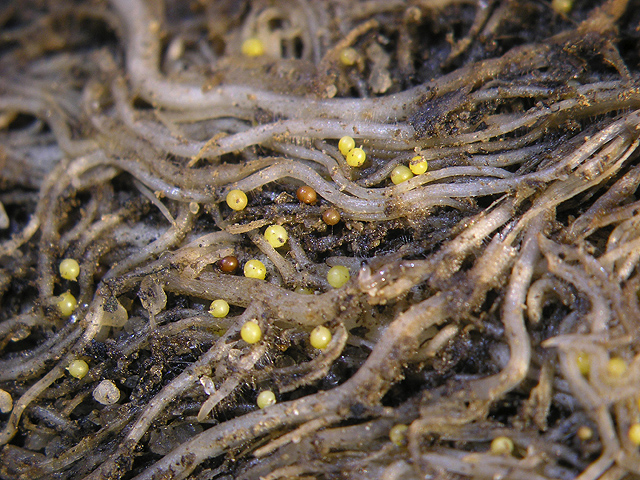Potatoes Update – November 2020
2 November 2020Forward planning for 2021 – sampling for nematodes
It is never too early to sample soils for nematodes, particularly as sampling fields when the soil is moist gives the most accurate estimate of nematode populations (especially free-living nematodes). The populations of potato cyst nematode (PCN) being found in ware land in particular have increased dramatically over the last 10 years and in some cases are unmanageable, requiring a 15 year break from potatoes to reduce populations to manageable levels. So it is wise to know what population and species of PCN that you have.
Potato cyst nematode and free-living nematodes (that transmit tobacco rattle virus that leads to spraing and can cause significant feeding damage and effects on yield) can be sampled as soon as any fields planned for next seasons’ potatoes have been harvested. Sampling for PCN can be done at any time, but for free-living nematodes (FLN) ideally sample a few days after there has been some rainfall. Knowing the nematode populations present now will allow you to decide whether you are going to have to do something about nematode management for next season.
Results from SRUC trials have shown that feeding by free-living nematodes can have a significant impact on yield, so knowing the population of nematodes in the soil and the spraing virus status can help in planning whether a nematicide treatment is required.
SRUC can test fields for the presence of PCN, free-living nematodes and nematode transmitted tobacco rattle virus, the cause of spraing in potato tubers, and growers are recommended to sample sooner rather than later for these nematodes.
Click here for full details on soil sampling.
Sampling for diseases
SRUC’s Crop Clinic in Aberdeen offers diagnostic tests on soil to assess the risk of blackdot and powdery scab. Avoiding fields with high levels of powdery scab sporeballs is desirable. SRUC offer a PCR based test for powdery scab sporeballs in the soil that will help indicate fields with a particularly high risk so they can either be avoided or a resistant variety can be used.
To obtain an accurate assessment of the risk from disease fields greater than 4ha in size will need to be divided into smaller sub-samples. Around 10g of soil should be taken from 100 points using a PCN augur (1kg soil in total). Sampling should take the form of a W pattern. The distance between sampling points will need to be adjusted according to field shape and size (especially if under 4ha). Samples should be placed in a strong plastic bag, sealed to prevents soil leakage and labelled with the field name, section or part of field (if applicable), name of sampler, date of sampling and previous cropping history (5 years).
Samples should be kept cool and dispatched as soon as possible to SRUC Crop Clinic, Ferguson Building, Craibstone Estate, Bucksburn, Aberdeen, AB21 9YA. Tel. 01224 711206 or 01224 711279.
Sign up to the FAS newsletter
Receive updates on news, events and publications from Scotland’s Farm Advisory Service

